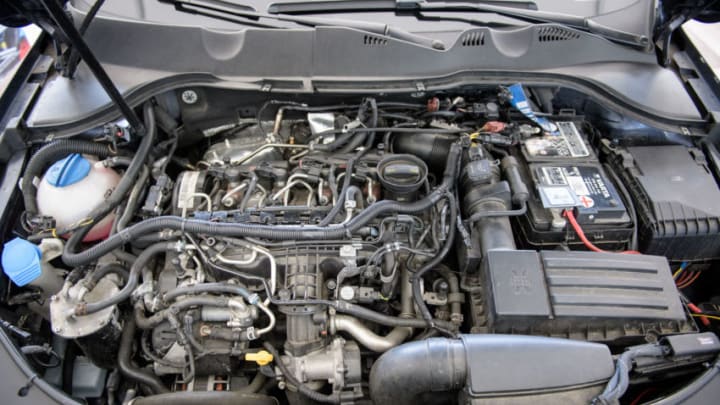The Lifeblood of Your Engine
Fluids are the lifeblood of your engine. They carry heat away from vital components, lubricate metal-to-metal friction surfaces, and provide pressure to actuate things (like your highly-complex variable valve timing components). Making sure these fluids are all clean and “topped off” is more critical now than it ever was – and it’s all about as easy as throwing a TV dinner in the microwave!
NOTE: When filling fluids, fill a little bit at a time to ensure you don’t put too much in. It’s easy to add a few more drops. Extracting excess fluids can be a whole different story.
Engine Oil
We all need engine oil (still) to lubricate our engines, and we need the right amount. Newer cars with more efficient engines require less-frequent attention, but it’s still good to give it a check every now and then, especially if you’re going to do some distance driving. It’s always better to find out you need something in the comfort of your local stomping grounds.
Oil changes used to be standard every 3,000 miles. With the advent of advanced oil compositions, additives, and detergents, oil can last a lot longer before it begins to break down. Many people get very confused by this, but you’ll always be safe adhering to recommended guidelines set forth by your manufacturer.
Easy As 1, 2, 3!
Checking oil is as simple as pulling out the oil dipstick, wiping it off, dipping it back in its tube to get a reading, and pulling it back out to check where the level is. The simple act of ensuring you have the right amount of clean motor oil is the best way to suck the maximum amount of miles out of your engine.
Oil is always checked while the vehicle is turned off while sitting on a level surface. When you look at the dipstick, you’ll notice markings at the tip – those markings indicate the “operating range.” (It’s usually a cross-hatched section of the stick, about a half-inch to an inch long; sometimes it’s just a few notches cut into the metal.) Anywhere within that range is acceptable. (If you know your engine consumes or leaks oil, it’s good to keep fluid levels towards the upper end of its range.)
Clean engine oil is usually very lightly tinted, but if your oil is dark, that doesn’t necessarily mean its “bad.” As soon as it starts lubricating engine components, it picks up sediment and particles and suspends them so they can harmlessly float around until you change the oil again. It will progressively get darker as time goes by, and this is completely normal. It just means the oil is doing its job.
